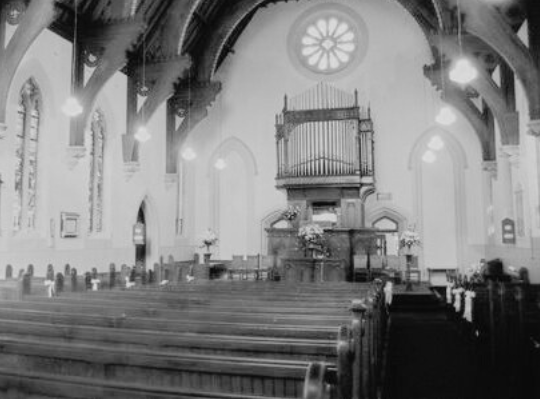Are we a church if we aren’t meeting?
In the strange time of the COVID 19 pandemic, churches have suddenly stopped meeting, and are facing that as a continued pattern in the medium term. This raises a question with practical implications. JOHN McCLEAN writes.
Are we a church if we are not meeting? This might seem an odd question, so it is worth reflecting on why the question arises. The most obvious reason is that the word “church” is used to translate a word in the New Testament which means “assembly” or “gathering” (ecclesia). In the book of Acts the life of the church is characterised by meetings (Acts 1:14; 2:46; 4:24, 31; 6:5-6; 11:26; 12:12; 14:27; 15:6; 16:40; 20:7). The epistles assume that the church meets (1 Cor. 5:4; 11:34; 14:26-40; Eph. 5:19; Col. 3:16; 4:16; 1 Thess. 5:27; 1 Tim. 4:13). Believers are instructed to not forsake meeting (Heb. 10:25). As God gathers us to himself, he brings us together by the Spirit to meet.
Broughton Knox, the former principal of Moore College, influenced thinking about church influence in Australian evangelical circles, especially around Sydney. He stressed the importance of gathering very strongly. He emphasised that we are gathered in “heavenly assembly” in Christ.[1] Since this heavenly gathering is reflected in our earthly gatherings Knox argued that “Church . . . in the Greek New Testament always refers to an actual assembling” and “fellowship . . . only exists when it is experienced” for it “consists of a word spoken and responded to in the context of receiving one another and appreciating one another.”[2] He makes no acknowledgment of the on-going relationships which exist because of the meeting. (Of course, he was not thinking of the possibility of meeting on-line, let alone in the midst of a pandemic).

The Code of the Presbyterian Church of NSW expresses a similar view when it defines a congregation as “a company of persons, including children, associated in a particular place for Christian worship, instruction, fellowship and work” (which is also sanctioned by the presbytery). So, we might wonder if a congregation exists when it won’t meet in any place for several months.
Churches exist because they meet, but they are more than a meeting. A church is also a ‘community’, a network of people who know and relate to each other. A meeting only exists while it is happening, a community continues to exist and its members have ongoing obligations to each other. A church is both meeting and community. It is a community expressed as a meeting, and a meeting which sustains a community.[3]
We can get the sense of the church as a community from the “one another” instructions of the New Testament. It is not that we are only to love and serve one another when we are meeting, but whenever we have opportunities. Similarly, the responsibility of members to submit to their elders (1 Pet 5:5) does not end when a meeting closes. The spiritual reality is that a church is united in Christ and forms his body and that is why we meet. A church has far deeper roots than its own meeting. That fits with my experience of church — I have connections with brothers and sisters because we are in Christ, the full experience of that comes with being part of the meeting and serving others in the community that exists around the meeting.
Viewing a church as meeting and community offers some insights which help us navigate the new situation. On the one hand, church still exists when we cannot meet. We are still called to love one another and care for each other. That is not just a general call to love other Christians (though it is that), but a specific instruction to care for the sisters and brothers to whom we are committed.
Since a church is a community that meets, we will do our best to connect with each other despite limitations on public meetings. In churches around the world leaders are working hard to find the best way for that to happen for their congregations. We can be very thankful that we live in an era when online connections are possible.
Making use of interactive online platforms will be important.
Small churches should be careful about ‘outsourcing’ their meetings. It is tempting to suggest that everyone watch a high-quality production from a big church (or old sermons of your favourite preacher from YouTube). However, God’s economy is for elders to teach and care for his people in each church, aim to keep that pattern. It’s best for leaders in each church to work out what they can do to look after their church, and help the members look after each other. You may need to ask for help for some technical resources to help serve the congregation.
Churches meet to ‘worship’ — we hear God’s word, we pray and sing together and we share in the sacraments. Over the next months, many of us will learn how to do those things – virtually – for the first time. One challenge will be to ensure that what we do connect people with each other and don’t just broadcast a church service. We need to helping people be part of a community that meets, not to be part of a passive lounge room audience. Making use of interactive online platforms will be important.
People who cannot easily access on-line meetings will struggle with church over the next months. Some older people will find this particularly difficult, and there are others who are digitally disadvantaged. Those groups will need particular care from churches.

Meeting online is a secondary substitute for meeting in person. (Rob Doyle who taught me theology at Moore College used to stress the importance for church of ‘propinquity’ — being face to face). Christian’s know that our bodies matter. They are made for the Lord (1 Cor 6:13-20). We are redeemed through the incarnation, the death, and the bodily resurrection of Christ and we wait his physical return when our bodies will be glorified. The Bible speaks of the body language of worship — bent knees (Da 6:10; Mt 9:18; Eph 3:14; Ps 95:6); lifted hand (Ps 28:2; Ex 17:11–13; Ps 141:2; La 2:19; 3:41; 1Ti 2:8) and lips that praise God (Ps 34:1; 51:15; 63:3–5; 119:171; Isa 57:19; Mt 21:16; Ps 8:2; Heb 13:15). The apostles preferred to visit churches personally, but when they were unable to, they wrote letters (Rom 1:11–13; 15:23; 2 Jn 12; 3 Jn 10, 13-14). It all goes to show how important bodies are — and why digital cannot replace bodily presence.
There is a danger that after six months of meeting online, Christians will come to prefer it. Our consumerist, experience-driven culture has put pressure on regular attendance at worship for years and now repetition may form new habits. However, I am optimistic on that front. I think that a period of social and church isolation will leave most Christians hungry for meeting in person again.
The greater risk is that people will drift away from church, not because they like online worship better but because they are not closely connected to the church community. This is a time to have accurate church rolls and to work hard at contacting everyone to ask their needs and to encourage them to serve others.
So, we don’t have to worry that the church does not exist when we do not meet. We are bound together in Christ. In fact, we can meet, though meeting online is far from ideal. The challenge is to help churches to keep meeting and to continue to express the community they have in Christ.
As I was finishing off this piece, Gospel Coalition Australia published a similar one by Chase Khun from Moore College: https://au.thegospelcoalition.org/article/the-church-in-a-time-of-pandemic-are-we-still-the-church-if-we-cant-meet/
You might find it a useful perspective as well.
[1] D. B. Knox, “Demythologising the Church.” Reformed Theological Review 32, no. 2 (1973) 48-55.
[2] Knox, “De-mythologising” 54.
[3] I’ve argued this further in “Living in God’s Mission: Theses for a Systematic Ecclesiology”, Beyond Four Walls M. O’Neil, ed. (Eugene: Wipf & Stock, forthcoming).

